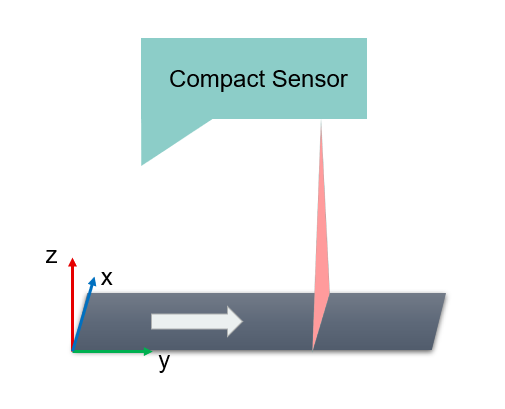Stemmer Imaging offers two main calibration methods:
| Custom Calibration Solutions | |
The appropriate calibration method depends on your setup and the level of accuracy required. The following table summarizes the calibration methods and the corrections that can be estimated using each:
| Calibration Correction | Calibration Method | Link to Calibration Theory |
|---|---|---|
| Basic intrinsic calibration - homography | ZigZag/AQS12 | Transformation of Range Map Coordinates to Metric Coordinates |
| Precise intrinsic calibration - homography - lense distortion - laser line distortion | ZigZag | |
| Encoder step | AQS12 | |
| Correction of inclined laser plane | AQS12 | Correction of an Inclined Laser Plane and Extrinsic Calibration |
| Rigid-body transformation | AQS12 |
As the necessary calibration method depends on your laser triangulation setup, three common use cases are described below:

For a modular setup, you will always need an intrinsic calibration to obtain metric x, y and z coordinates. Depending on the required accuracy, you can either perform the ZigZag calibration for high precision or the AQS12 calibration.
An AQS12 calibration is necessary, if any of the following apply:
In these cases, you can either perform the AQS12 calibration alone or combine it with the ZigZag calibration if a higher level of accuracy is required.

If you are using compact sensors with a factory calibration (e.g. the AT CS series), a precise intrinsic calibration is already available. If the encoder step is known and the laser is mounted such that the laser plane is perfectly vertical to the direction of movement, no further calibration is needed. You can simply apply the factory calibration. Section Creating a Calibrated Point Cloud with CVB - Intrinsic Calibration details how to create a calibrated point cloud with CVB.
However, if any of the following conditions apply, an additional AQS12 calibration is required:

Area-based 3D sensors typically provide height maps along with resolution value for the x, y, and z dimensions or even pre-calibrated point clouds. The resolution factors can be applied in CVB as described in the section Static Factors for ZMaps.
To align multiple sensors within a shared superordinate coordinate system, a rigid-body transformation using the AQS12 target can be determined. This requires the encoder step to be accurately known and the laser plane to be precisely aligned perpendicular to the direction of movement. If these prerequisites are not met, the encoder step, shear and scale must also be estimated using the AQS12 target.